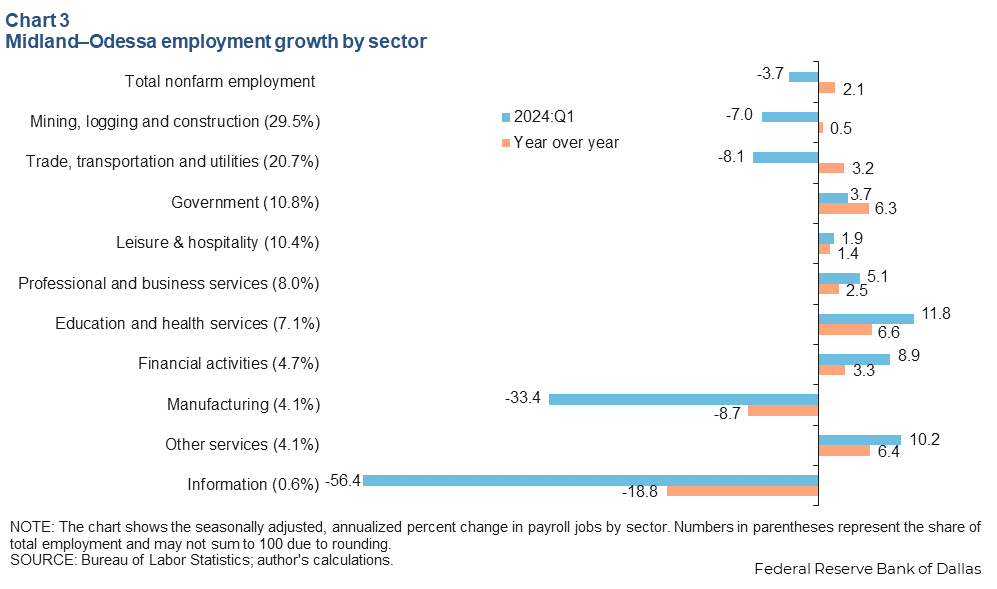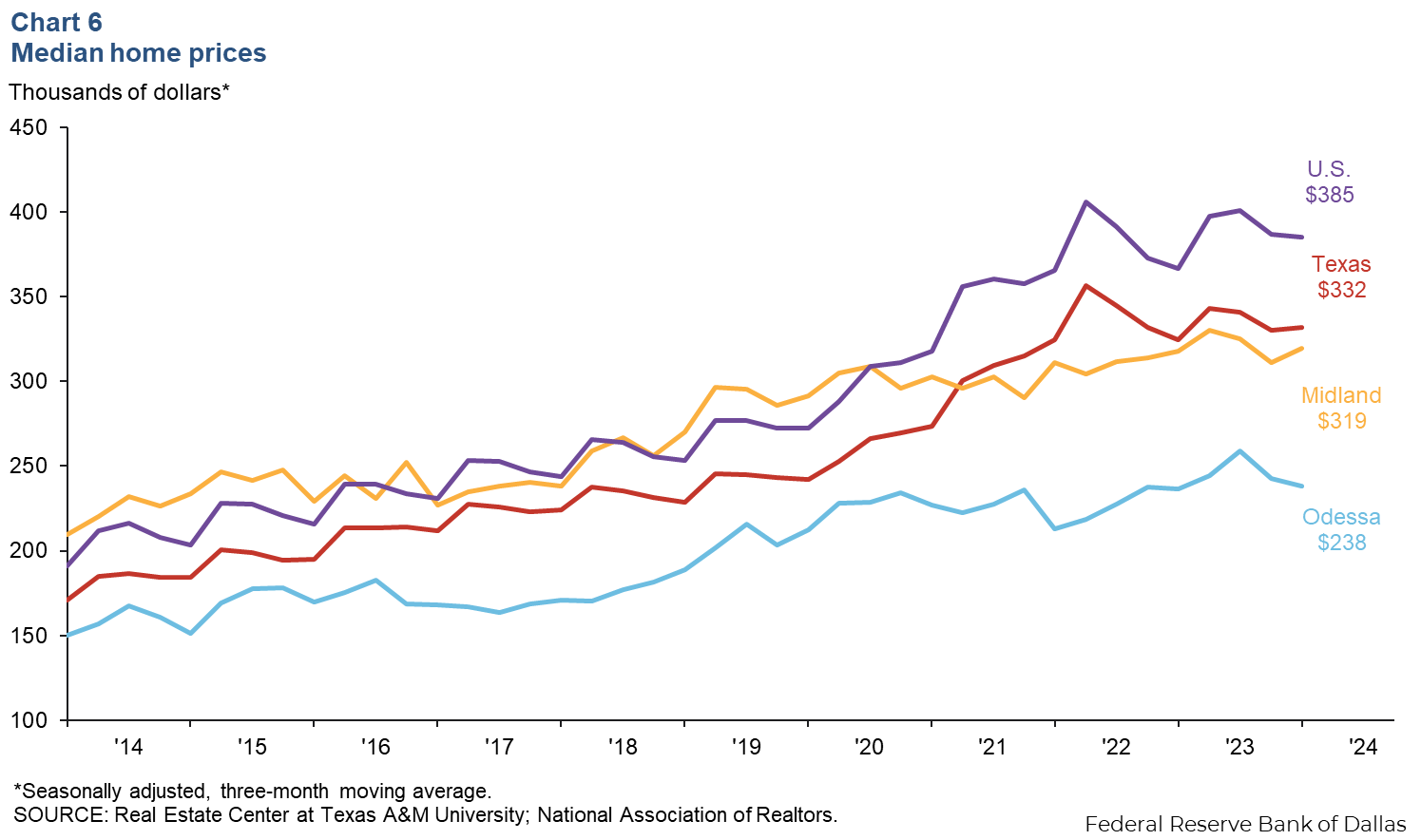Permian Basin Economic Indicators

| Midland–Odessa economy dashboard (first quarter 2024) | |||||
| Job growth (annualized) Dec. '23–March '24 |
Avg. unemployment rate |
Avg. hourly earnings | Avg. hourly earnings growth y/y |
||
| -3.7% | 3.2% | $33.67 | 1.4% | ||
Permian Basin employment fell during first quarter 2024, and the unemployment rate rose. The region’s rig count increased slightly, while the price of oil notably shot up. The inventory of existing homes in Midland–Odessa stayed the same, and the median home price increased marginally.
Energy
Oil prices up due to Middle East conflict, Russian refinery outages and OPEC+ policies
Oil prices have increased since the start of the year due to fears that the Israel–Hamas conflict will lead to bigger geopolitical tensions in the Middle East and cause supply disruptions. Another factor adding risk premium to the price of oil is the wave of Ukrainian drone attacks on Russian refineries. These two elements contributed to the price of oil rising from $72 per barrel in fourth quarter 2023 to $83 per barrel in first quarter 2024 (Chart 1). OPEC+ has also limited the supply on the market with their voluntary oil output cuts of 2.2 million barrels per day. The squeeze on supply also pushed prices higher.

Permian oil production hits new high
Oil production continued to climb, reaching an all-time high of 6.16 million barrels per day in fourth quarter 2023, up 8 percent year over year (Chart 2). The rig count in the Permian Basin rose in the first quarter but is down 12 percent year over year. This increase is the first time the rig count has risen since first quarter 2023.

Employment
Energy sector sees job gains slowdown
Year to date, job growth in the Permian Basin fell 3.7 percent (Chart 3). This was lower than the increase of 2.5 percent in Texas and 2.1 percent in the U.S.

The most notable slowdowns in job growth in the first quarter were in information (-56.4 percent) and manufacturing (-33.4 percent).
Sliding natural gas prices have pumped the brakes on hiring for mining, logging and construction jobs, with the sector experiencing a 7.0 percent slowdown in the first quarter and only a 0.5 percent increase year over year. Some natural gas firms, including Comstock Resources, said they are dropping rigs and frac crews as Henry Hub prices of $2.10 per million British thermal units are damaging bottom lines.
Unemployment falls
Midland’s and Odessa’s unemployment rates declined during the first quarter to 2.7 percent and 3.6 percent, respectively, with the average for the basin being 3.2 percent (Chart 4). Unemployment rates were higher in both Texas (3.9 percent) and the U.S. (3.8 percent). Labor force participation was flat during the first quarter in Midland and ticked up slightly by 0.1 percent in Odessa.

Housing
Basin’s inventory remains level
Midland–Odessa’s supply of existing homes for sale stayed the same at 2.2 months in first quarter 2024. That figure is lower than Texas’ 4.2 months of inventory (Chart 5). The three-month moving average for months of inventory was 2.4 in Midland and 2.0 in Odessa. These inventories are below six months, which is considered a balanced market.

Home-price growth stabilizes in first quarter
The median home price in Midland grew 0.3 percent year over year from first quarter 2023 to first quarter 2024. In Odessa, the price increased by 0.8 percent year over year. The median nominal home price in Midland was $319,000, and it was $238,000 in Odessa, compared with $332,000 in Texas overall (Chart 6).

NOTES: Employment data are for the Midland–Odessa metropolitan statistical area (Martin, Midland and Ector counties), unless otherwise specified. Energy data include the 55 counties in West Texas and southern New Mexico that make up the Permian Basin region. Data may not match previously published numbers due to revisions.
About Permian Basin Economic Indicators
Questions or suggestions can be addressed to Kenya Schott at kenya.schott@dal.frb.org. Permian Basin Economic Indicators is released quarterly.